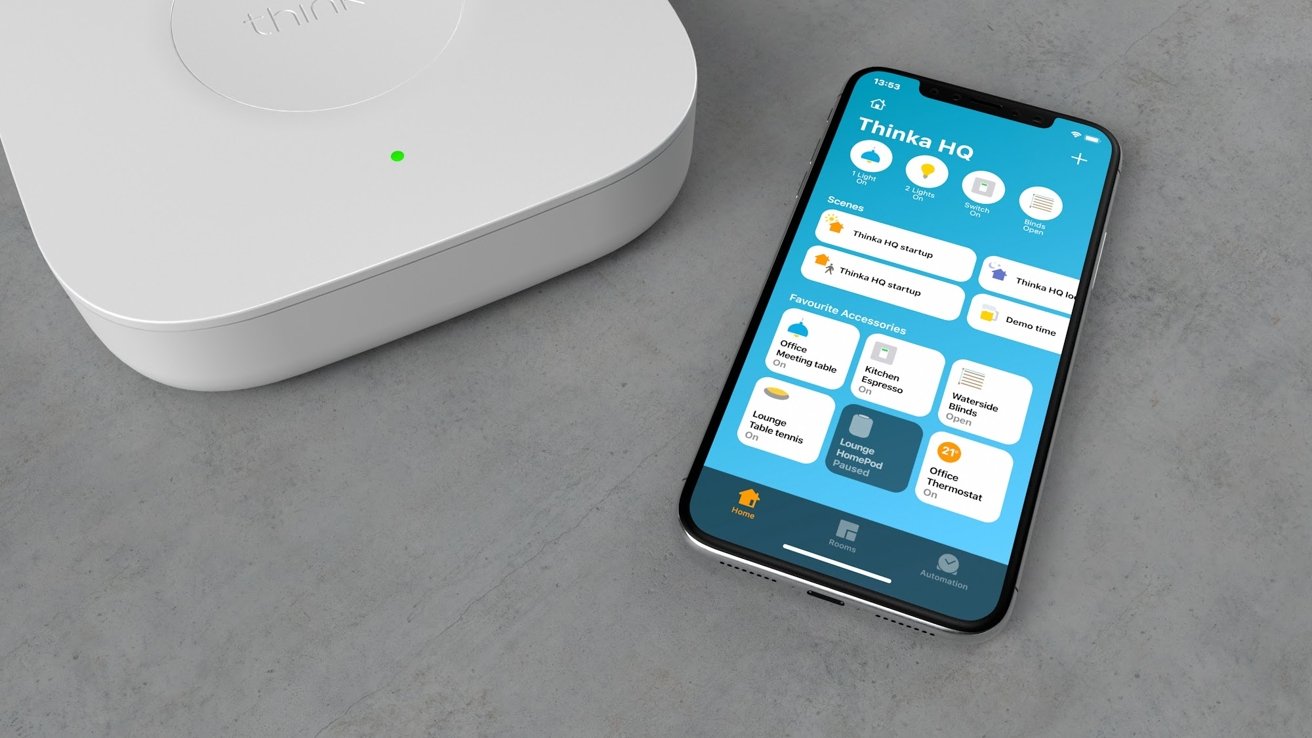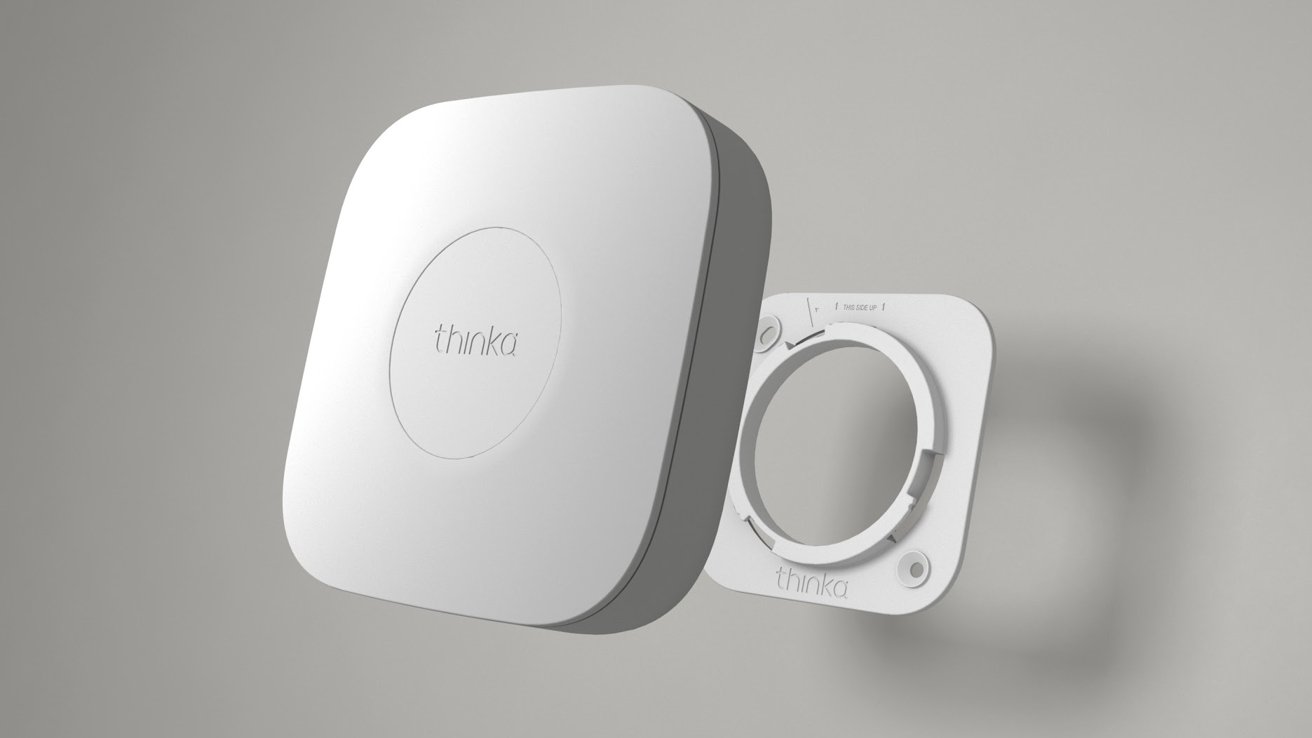Thinka debuts world's first Z-Wave hub for HomeKit
Thinka on Tuesday took the wraps off the first Z-Wave hub for HomeKit, bringing support for more than 3,300 new accessories to Apple's smart home platform.

Thinka Z-Wave hub for HomeKit
The new Apple-certified Thinka Z-Wave is a simple hub that allows many Z-Wave accessories to work with HomeKit for the first time. This includes smart switches, thermostats, dimmers, doorbells, speakers, curtains, fans, dimmers and various sensors from over 600 different brands.
"90% of all HomeKit accessories are based on WiFi or Bluetooth, which, unlike the Z-wave protocol, are not optimized for home automation," said Thinka founder and CEO Michael Franken. "Z-Wave offers a full range of over 3,000 smart home products, so by unlocking Z-Wave for HomeKit, Thinka brings the best of two worlds together"

Thinka Z-Wave hub for HomeKit
Unlike Wi-Fi and Bluetooth, Z-Wave was designed for smart home automation and has existed far longer than the emerging Thread standard. It is optimized for range and is extremely power efficient. Thinka touts Z-Wave as the protocol with the largest product range, and now those devices will work with HomeKit.
Prior to the Z-Wave hub, Thinka's first product was a KNX hub that works with HomeKit.
The Amsterdam-based company is launching the Thinka Z-Wave in Europe for 429 euros before coming to the United States next year.
Read on AppleInsider

Thinka Z-Wave hub for HomeKit
The new Apple-certified Thinka Z-Wave is a simple hub that allows many Z-Wave accessories to work with HomeKit for the first time. This includes smart switches, thermostats, dimmers, doorbells, speakers, curtains, fans, dimmers and various sensors from over 600 different brands.
"90% of all HomeKit accessories are based on WiFi or Bluetooth, which, unlike the Z-wave protocol, are not optimized for home automation," said Thinka founder and CEO Michael Franken. "Z-Wave offers a full range of over 3,000 smart home products, so by unlocking Z-Wave for HomeKit, Thinka brings the best of two worlds together"

Thinka Z-Wave hub for HomeKit
Unlike Wi-Fi and Bluetooth, Z-Wave was designed for smart home automation and has existed far longer than the emerging Thread standard. It is optimized for range and is extremely power efficient. Thinka touts Z-Wave as the protocol with the largest product range, and now those devices will work with HomeKit.
Prior to the Z-Wave hub, Thinka's first product was a KNX hub that works with HomeKit.
The Amsterdam-based company is launching the Thinka Z-Wave in Europe for 429 euros before coming to the United States next year.
Read on AppleInsider

Comments
4.5 Comparison to other protocols
There are also longer comparisons on other websites:
https://www.electropages.com/blog/2019/02/smart-homes-explained-smart-home-protocol <--
https://www.tomsguide.com/us/smart-home-wireless-network-primer,news-21085.html <--
https://www.anixter.com/en_us/resources/literature/techbriefs/comparing-wireless-communication-protocols.html <--
I've been unhappy with the reliability of Zigbee (although last month I finally got it working perfectly by assigning a fixed IP to my Hue Hub) so I'm using the above links to decide which protocol I want to use.
I think this new Z-Wave Hub for Homekit is an excellent option for people who are already invested in Z-Wave products. But I'm not sure if that's the protocol I would pick if I were building a new network. Everyone has different requirements, and therefore choose different solutions. The most popular requirements seem to be:
I've used Indigo for home automation since 2005. Starting with X-10, some Insteon, and now fully Z-Wave. HomeBridge for Indigo (Open Source) is a hub/bridge for HomeKit. HomeKit for Indigo makes all Indigo devices (X-10, Insteon, Z-Wave, etc.) HomeKit compatible. It runs on a Mac (no other "boxes" required), and is free & easy to setup. I run it on the same Mac mini as Indigo. All of our HomePods (11) control all the Indigo devices perfectly with Siri voice-command, and the Home app works perfectly as well.
I would never pay $400-$500 USD for a Z-Wave bridge - that makes ZERO sense. They are pricing themselves out of the market.
Regarding HomeBridge, and other "boxes", see my reply to MpIsP - HomeBridge runs perfectly fine on a Mac. And a Raspberry Pi can easily be powered by a PoE switch - right equipment for the job.
t would almost be cheaper to replace all of your switches and sensors at that cost.